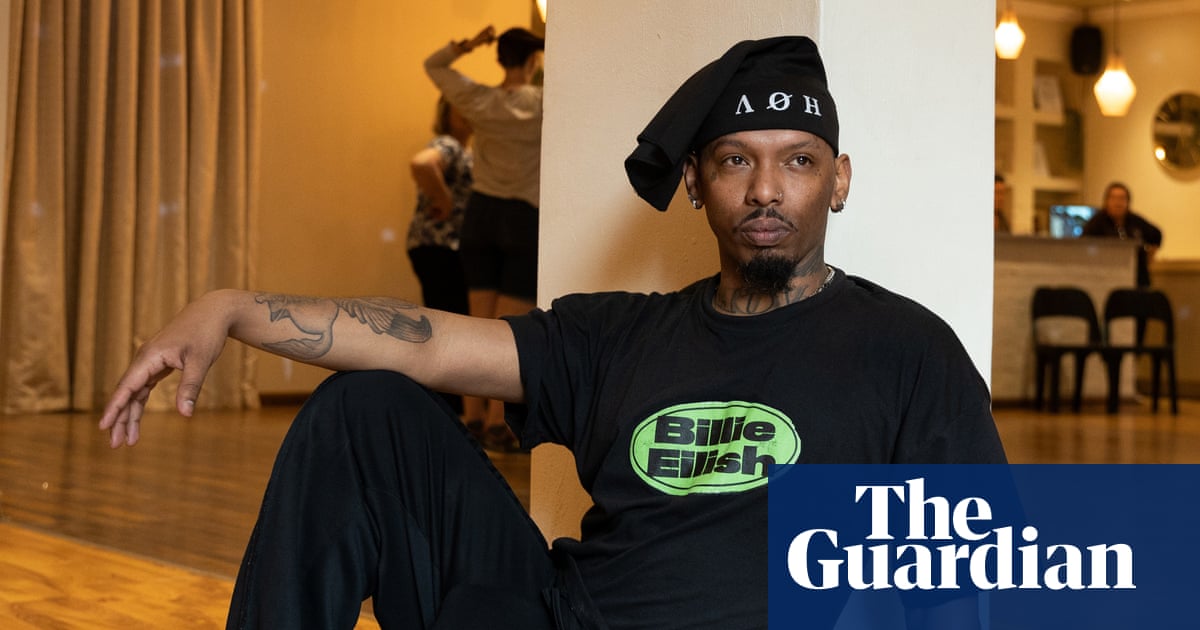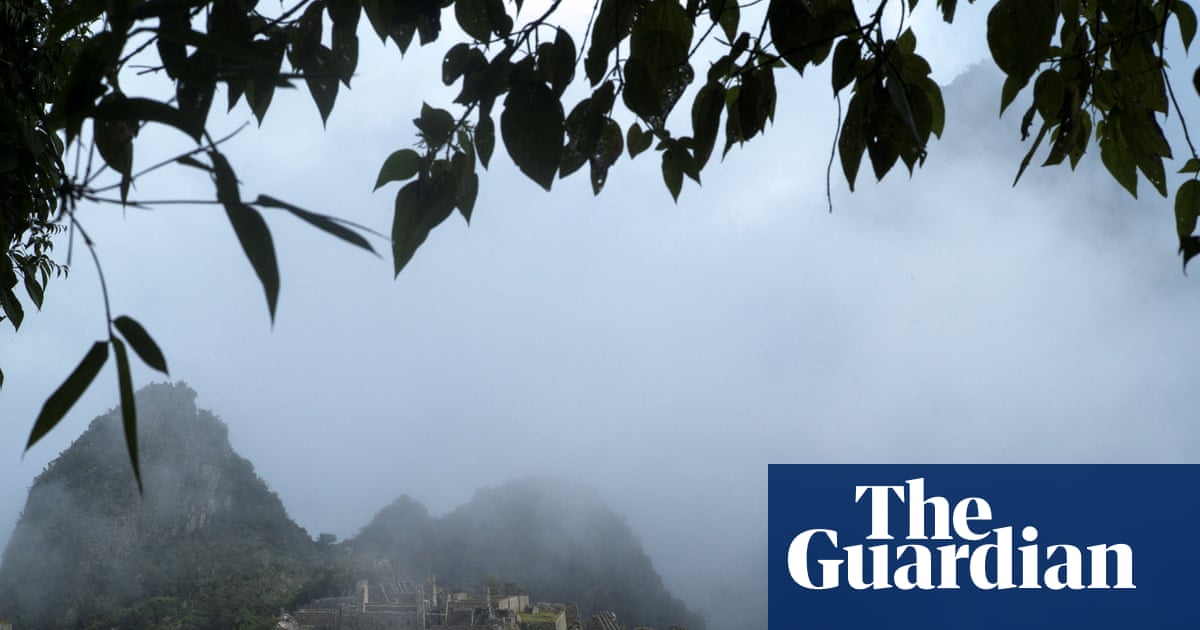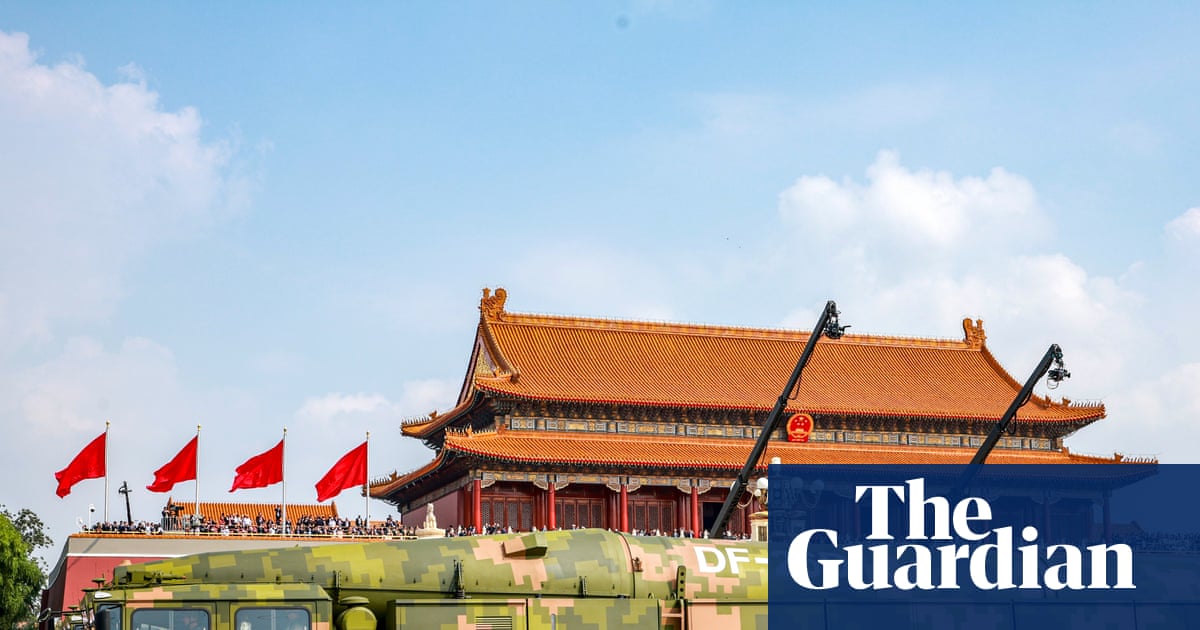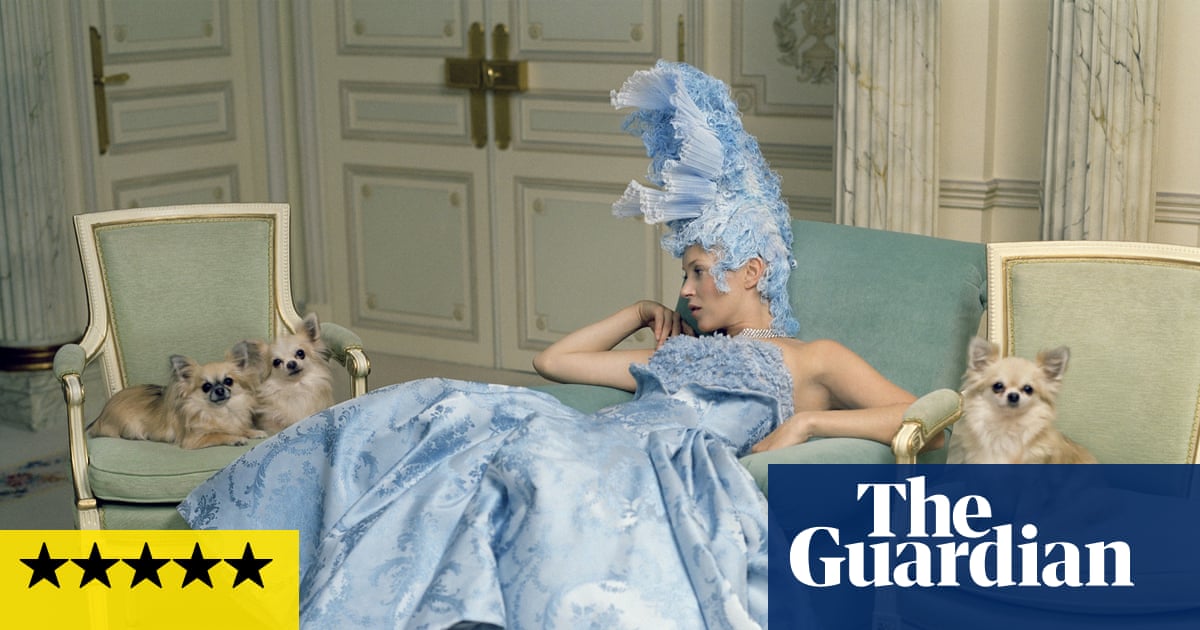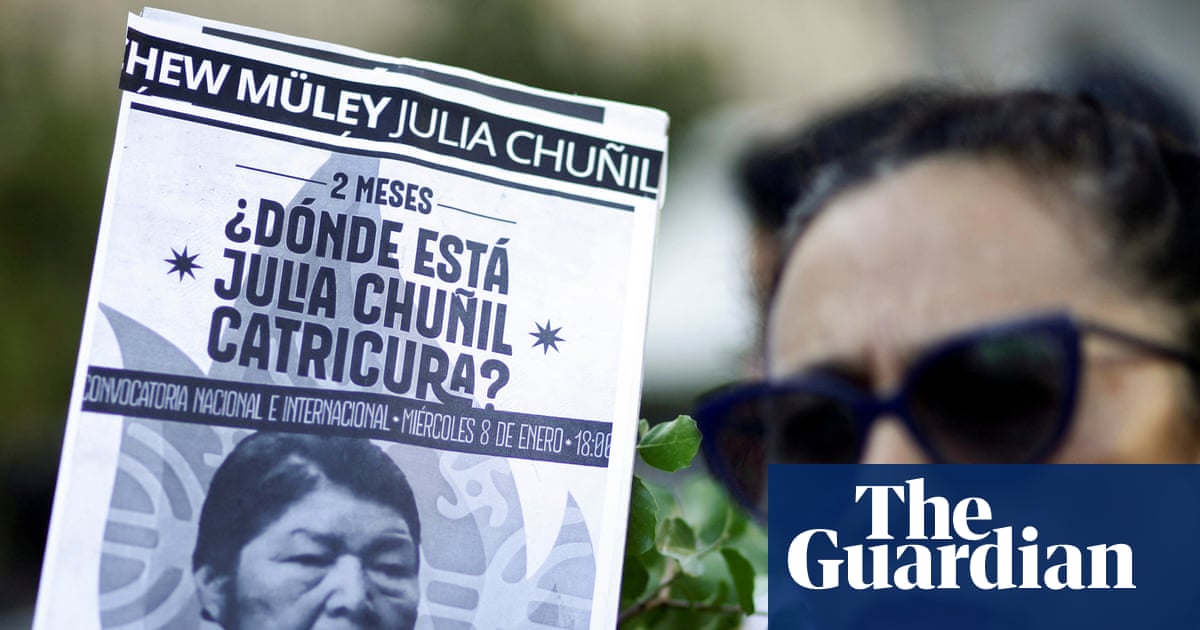NGV senior curator Wayne Crothers says that up until the 20th century the term kimono was used generically to describe all clothing – the garments we now know as kimonos were simply ‘what everyone wore’. He says: ‘Historically they didn’t use the word kimono. They used all of these huge vocabulary of words to describe different styles.’
Photograph: Mitch Fong/National Gallery of Victoria
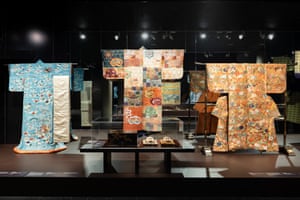
Made for an aristocratic woman during the Edo period, circa 1800, this silk garment was designed to be worn open, with the padded hem trailing behind. It depicts a falconry scene – a common hobby for wealthy people at that time. ‘An imperial lord or a princess would ride in that cart at the bottom,’ Crothers says. ‘This is very much for samurai-class women.’ At the time the kimono was made, Japan had closed its borders to the wider world but inside the country it was a time of relative peace and prosperity, at least for the upper classes.
Photograph: National Gallery of Victoria
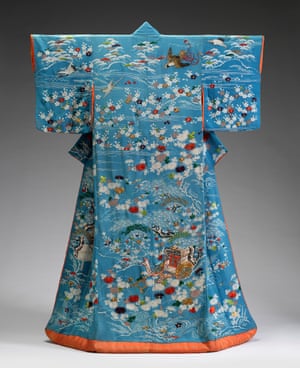
Outer layer garments during this period were often ‘gorgeously, embroidered and decorated’, Crothers says. First, a kimono would be coloured through resist-dye techniques, then more colour and detail was added through embroidery.
Photograph: Mitch Fong/NGV

Crothers says this garment is at the ‘completely other end of the scale … a kimono made out of necessity from fragments or scraps of fabric’. While people think of Japan as wealthy, this garment from the Meiji period (1868-1912) shows ‘there were people that didn’t have very much finance, they toiled very hard as labourers or farmers’. Called a boro (rag) kimono, scraps were quilted on top of each other until it was thick enough to provide warmth in winter. This technique shows ‘the more love that you imbue into an object, the more beautiful it becomes’.
Photograph: National Gallery of Victoria
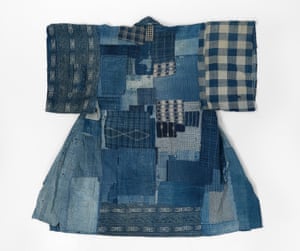
During the Meiji period, from 1868 onwards, Japan reopened its borders to the world and Japanese design became a global obsession. During the late 19th century, it was very fashionable for aristocratic western women to sit for portraits in Japanese garments. This artwork by Australian impressionist John Longstaff was painted shortly after he arrived in Paris in 1890.
Photograph: John Longstaff/NGV

Department store Liberty, in London, were ‘very early adopters of importing the export kimono from Japan and then also adapting the silhouette for western tastes’, says Charlotte Botica, curator of fashion and textiles at NGV. This gown, made in-house by Liberty in 1910, features western flowers depicted in a Japanese style, with a classic kimono shape adapted into a western evening robe.
Photograph: National Gallery of Victoria
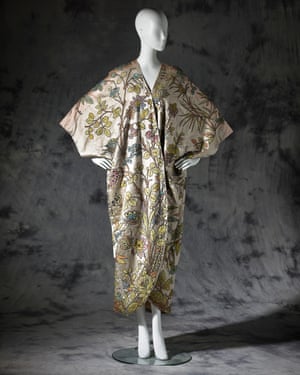
This poster showcases the visual exchange that happened between Japan and the west from the late 19th century onward. Hisui Sugiura was Japan’s first superstar graphic designer. This poster is an advertisement he made for the department store Mitsukoshi. Sugiura had recently returned from Paris when he created the work in 1914 and was inspired by art nouveau style. That style had in turn been heavily influenced by traditional Japanese aesthetics.
Illustration: Hisui Sugiura/National Gallery of Victoria
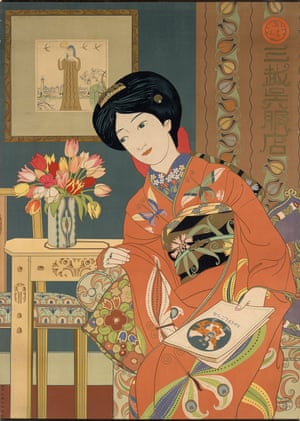
Made in 1930, this is the kimono equivalent of novelty boxers. Men’s outer robes tended to be dark and sober but their inner robes (nagajuban) were a chance for self-expression. It features illustrations of planes, ships and automobiles. During this era, for the first time, young men and women ‘earned their own income and they could buy the things that they wanted … rather than being dependent on their parents’, Crothers says. It is one of many garments in the exhibition ‘that reveal the interests of the “modern girls” and the “modern boys” of the 1930s … moga and mobo was the abbreviated term in Japan at the time’.
Photograph: National Gallery of Victoria
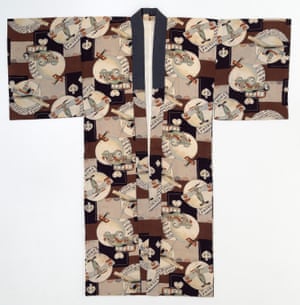
Made in 1961, this is a museum piece from renowned artisan Serizawa Keisuke. ‘Rather than just dyeing a flat piece of fabric or textile, he’s using the kimono format as a canvas to create his works,’ Crothers says. It is dyed using an Okinawan technique involving banana leaf fibre and stencils. This motif is ‘inspired by glaze dribbling down the side of a jar’.
Photograph: National Gallery of Victoria
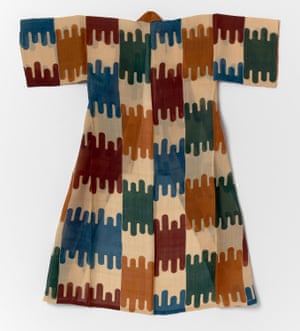
Tamao Shigemune is one of the leading Harajuku street style designers working today. During the 20th century, kimonos were seen as impractical for a long period but, from the 1990s on, the style has re-emerged among young, fashionable people. Tamao uses polyester and digital printing techniques to make more affordable kimono.
Photograph: Tamao Shigemune/Katomi/National Gallery of Victoria
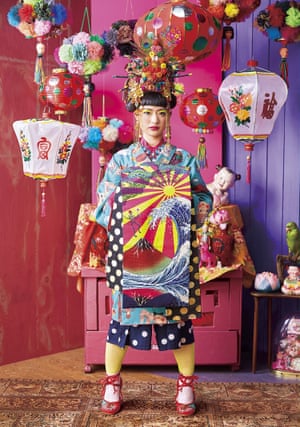
Rumi Rock is another leading contemporary street style designer. This kimono, which features long sleeves traditionally worn by young women, was made for a coming of age ceremony. It is paired with a modern take on geta, a double ‘toothed’ traditional platform sandal.
Composite: Rumi Rock/Akihisa Okumoto/National Gallery of Victoria
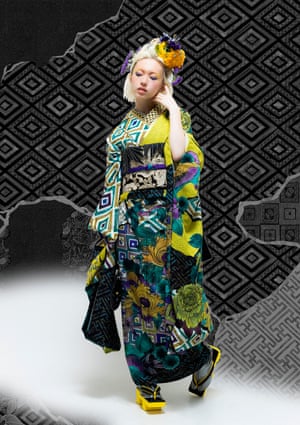
Alexander McQueen’s spring/summer 2008 runway show was inspired by Isabella Blow but this garment also features many traditional Japanese elements, such as long trailing sleeves and a butterfly motif. The belt is a hybridisation of a corset and a traditional Japanese obi. ‘The butterfly is the personification of the soul in Japanese culture,’ Botica says.
Photograph: Michel Dufour/WireImage
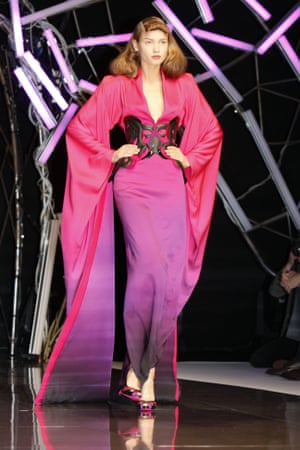
Hiroko Takahashi is a star of contemporary Japanese design, collaborating with brands such as Adidas and creating garments for sumo wrestlers. She is ‘a very savvy, creative but extremely approachable designer’, Crothers says. In this self-portrait, as in many of her works, she has chosen to pose in a fighter’s stance. ‘Which is not the traditional demure, feminine style pose,’ he says. The NGV’s exhibition features many works by Hiroko, including one custom-made for the exhibition, modelled on a life-sized statue of the designer.
Illustration: Hiroko Takahashi/National Gallery of Victoria


 3 months ago
73
3 months ago
73




